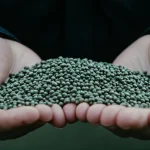Essential Tips for Making Perfect Homemade Crumpets
Achieving perfect crumpets at home hinges largely on the consistency of your batter. A batter that’s too thick will yield dense crumpets, while one that’s too runny won’t hold the characteristic holes. Aim for a batter thick enough to coat the back of a spoon but still pourable. This balance creates the ideal texture and allows the batter to rise well during cooking.
Another key aspect of homemade crumpet tips involves proper proving times. Giving your batter enough time to ferment encourages the yeast to create air pockets, which become the beloved holes in these treats. Typically, a proving period of about one to two hours in a warm spot works well, but you can adjust based on room temperature and yeast activity. Patience here results in a noticeable difference in texture.
Also read : How do you create a perfectly balanced fish and chips?
Choosing the right cooking equipment also plays a crucial role in crumpet making advice. Use a heavy, non-stick skillet or griddle for even heat distribution. Additionally, crumpet rings ensure uniform shape and thickness, crucial for consistent cooking. Proper heat control prevents burning while allowing the crumpets to cook through and develop those signature holes on top.
Combined, these tips elevate your homemade crumpets from ordinary to truly impressive.
Also to discover : How do you achieve the ideal texture in a sticky toffee pudding?
Achieving the Signature Crumpet Holes and Texture
Creating the iconic crumpet holes is key to achieving the perfect crumpet texture. These holes form when the batter ferments, releasing carbon dioxide that creates bubbles. To maximize crumpet holes, it’s essential to use the right amount of yeast and batter thickness. A batter that’s too thick prevents bubbles from rising, resulting in a dense texture, while too thin causes bubbles to pop, leading to flat crumpets.
If your crumpets turn out dense or flat, troubleshoot by checking that the yeast is active and the batter is well-mixed to encourage gas retention. Avoid over-stirring after fermentation stops, as this can break down bubbles. Additionally, cooking on medium-low heat allows bubbles to form and set without burning, ensuring even browning and a spongy texture.
Managing heat is vital. High heat may brown the outside quickly, but the inside can remain uncooked, ruining the crumpet texture. Patience during cooking helps preserve classic crumpet holes and ensures they remain airy yet firm, making each bite delightfully light. Adjusting these factors can troubleshoot crumpets successfully and replicate their sought-after texture.
Common Mistakes to Avoid When Making Crumpets
When tackling homemade crumpet troubleshooting, one crucial factor is batter proofing. Over-proofing the batter can cause it to become too airy, leading to crumbly crumpets that collapse after cooking. Conversely, under-proofing results in dense crumpets without the characteristic holes. It’s essential to find the right balance by letting the batter rise until bubbles form but before it doubles in size.
Another frequent crumpet mistake involves the batter’s thickness. If too thin, the crumpets will spread excessively and cook unevenly. If too thick, the batter won’t rise properly, producing heavy textures. Aim for a consistency similar to thick pancake batter, which pours smoothly but holds shape in the ring.
Pouring technique also impacts results. Pour the batter gently into the crumpet rings to avoid splashing, which affects uniform cooking. Using rings ensures the iconic shape and helps maintain consistent thickness.
Finally, avoid burnt or undercooked crumpets by managing heat carefully. Moderate heat cooks the crumpets through without over-darkening. Patience is key—cooking slowly allows the interior to cook fully while the outside develops that classic golden colour. Avoid rushing this stage to prevent common homemade crumpet mistakes.
Equipment and Tools for Homemade Crumpets
Choosing the best tools for crumpets is crucial for achieving their signature shape and texture. Traditional crumpet rings serve as molds that contain the batter, allowing it to rise evenly and form those characteristic holes on top. Ideally, select stainless steel rings with smooth edges, about 3 to 4 inches in diameter. These rings provide sturdy support and distribute heat efficiently.
When preparing your kitchen equipment, thorough greasing is key. Lightly coat the crumpet rings and the cooking surface with butter or oil to ensure easy crumpet release without breaking their delicate structure. Over-greasing should be avoided, as excess oil can prevent the batter from rising properly within the rings.
If you don’t have traditional crumpet rings, practical substitutes include cleaned tuna cans with both ends removed or metal cookie cutters with straight sides. Be sure any substitute is heat-safe and of similar size to maintain uniform crumpet thickness. Alternatively, silicone muffin molds can offer a non-stick option, though they may affect the crumpet’s texture slightly due to different heat conduction.
Proper choice and preparation of equipment and tools are essential steps in mastering homemade crumpets, ensuring consistent results every time.
Enhancing Your Crumpets: Flavors, Toppings, and Variations
Adding crumpet flavor variations is a delightful way to personalize this classic treat. Mix-ins like cinnamon, nutmeg, or finely chopped dried fruit in the batter create subtle yet exciting twists. For savory options, try grated cheese or fresh herbs, which lend depth and richness to each bite.
When it comes to crumpet toppings, the choices are endless. Traditional butter and golden syrup remain beloved, but consider gourmet crumpets paired with cream cheese and smoked salmon or avocado and poached eggs for a refined touch. Sweet toppings like clotted cream, honey, or fresh berries offer a luxurious finish and can elevate your crumpet experience beyond the ordinary.
To keep your homemade crumpets fresh, proper storage is key. Place them in an airtight container and refrigerate for up to three days. When reheating, using a toaster or skillet preserves their characteristic crisp texture without making them soggy, unlike microwave methods. These tips maintain the delightful crunch and warmth, ensuring every bite is as excellent as freshly made.
Experimenting with crumpet flavor variations and toppings transforms these simple treats into versatile gourmet crumpets perfect for any occasion.




